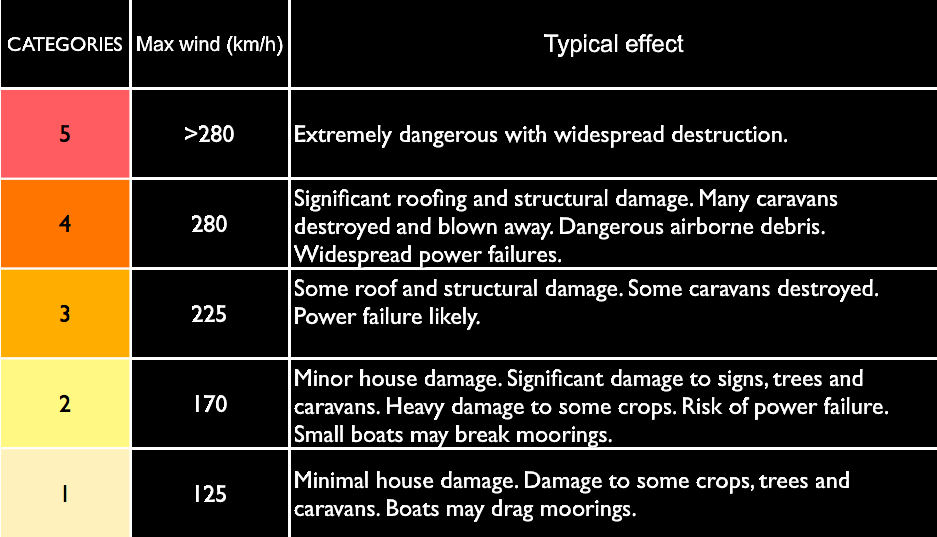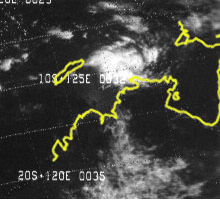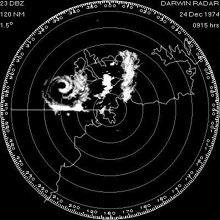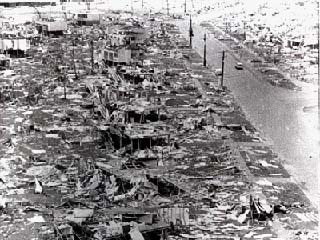"A tropical cyclone is defined as an intense low pressure system that forms over tropical oceans with sustained winds, exceeding gale force (63km/h) surrounding the centre. " (Northern Territory Library)
Severe tropical cyclones have maximum winds surrounding the centre exceeding hurricane force (120km/h), cyclone Tracy was classified as a ‘severe tropical cyclone’.
Tropical cyclones occur most frequently off the northwest coast of Western Australia, in the Gulf of Carpentaria and in the Coral Sea. On average about ten tropical cyclones occur in the Australian region each year and about six across the coast. Our cyclone season is from November to April and usually only four cyclones each season are classified as severe (usually out at sea), these cyclones approximately span about nine days.
The structure of a cyclone can be broken down into four parts:
-Eye, the centre of the cyclone that usually is characterised by a cloudless sky (40km in diameter)
-Eye Wall, surrounds the eye and has the most violent winds (15km in diameter)
-Spiral Bands, pattern of connective cloud bands spiralling towards the eye wall
-Cirrus Canopy, uplift of moist air within the connective clouds of the eye wall
Statistics of Cyclone Tracy
Size – 40km from the centre
Diameter of eye – 12km
Maximum wind gust - 217km/h (before the anemometer ceased functioning)
Central pressure – 950 hectopascals
Rainfall – 255mm in 12 hours
Death Toll – 65 people
Injuries - 145 serious injuries, over 500 with minor injuries
Number of houses destroyed – 80% of Darwin
Total damage bill - $800 million
Cyclone Tracy was classified as a category four cyclone, meaning that the wind speed was between 165-224km/h, the central pressure was between 955-931hpa and its strongest gusts were between 225-279km/h. The typical effects for a category four cyclone include:
-Significant structural damage
-Dangerous airborne debris
-Widespread power failures
-Loss of homes
















